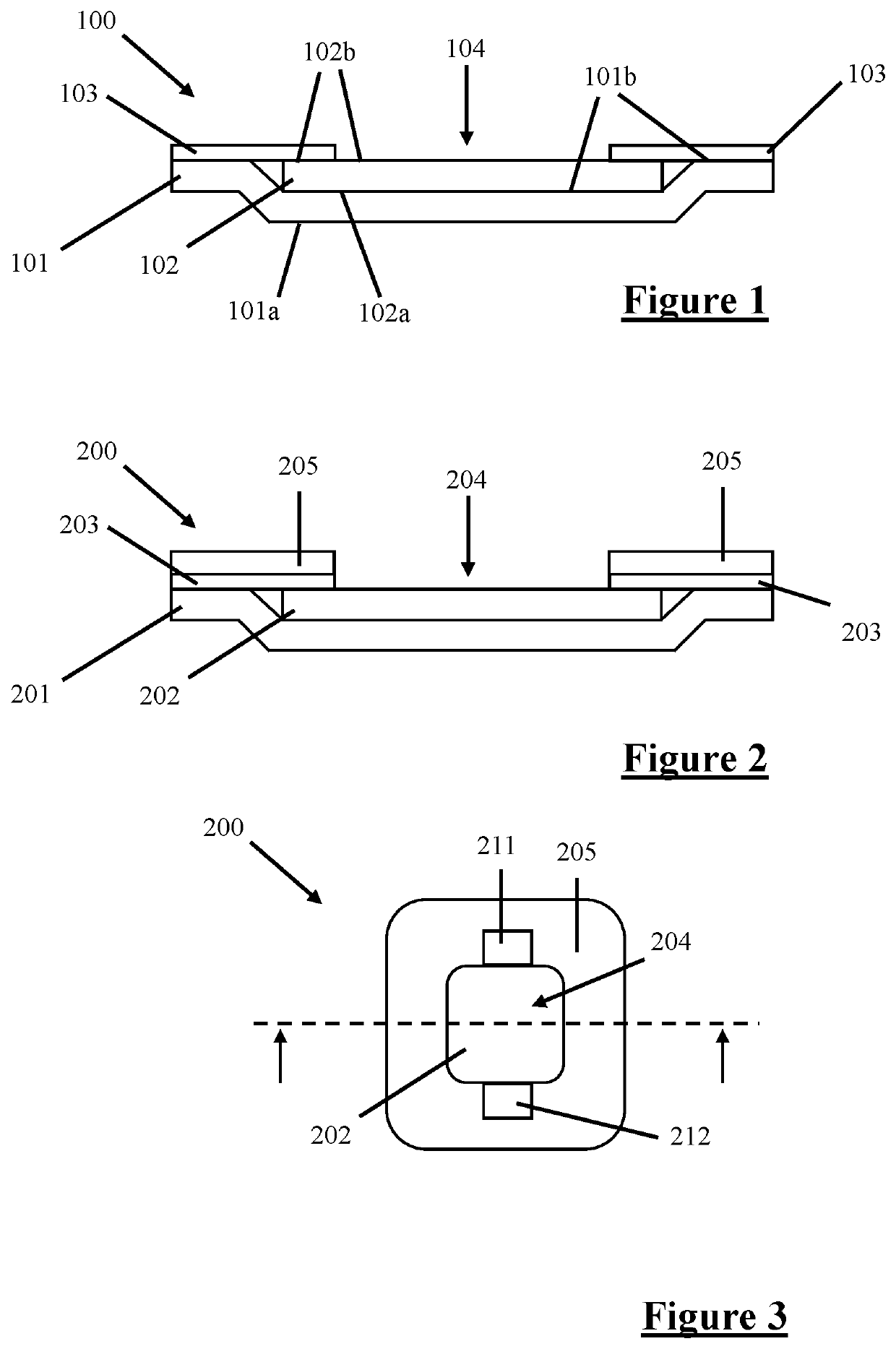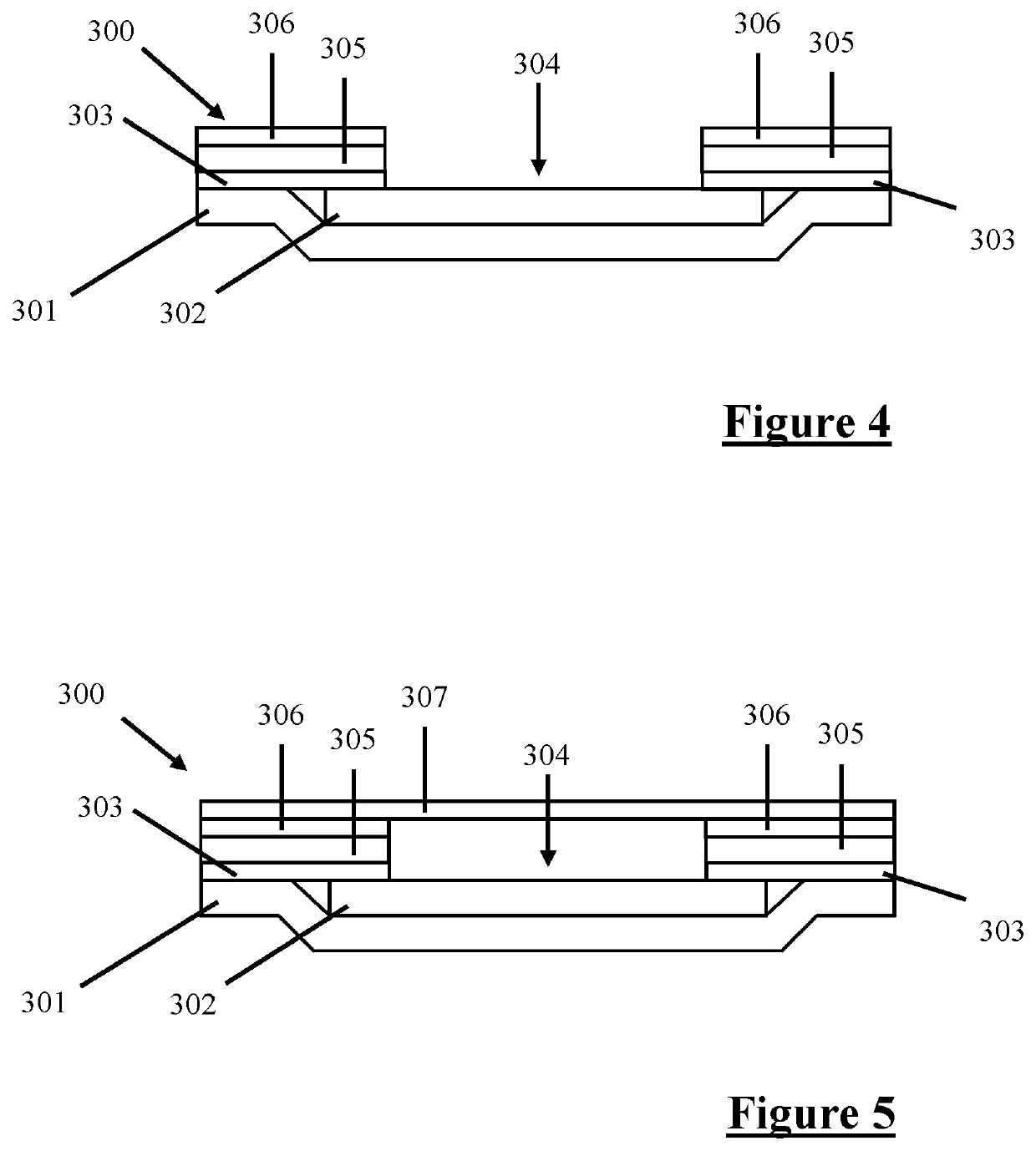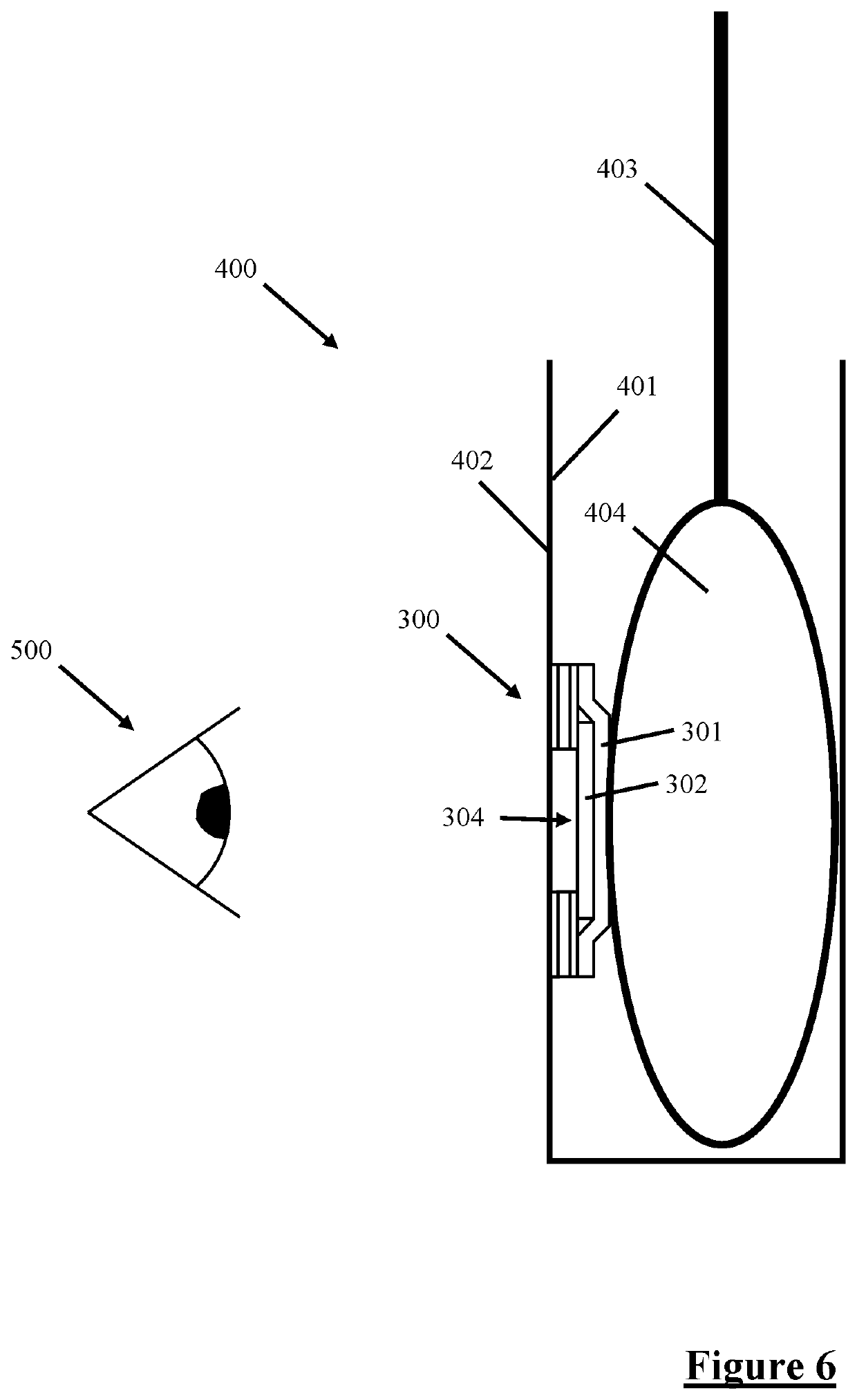Layered Detection Device
a detection device and layer technology, applied in the field of detection devices, can solve the problems of exacerbated problems, inaccurate biomarker detection and/or interpretation of detection, and complex process of visual change in the device caused by the reaction
- Summary
- Abstract
- Description
- Claims
- Application Information
AI Technical Summary
Benefits of technology
Problems solved by technology
Method used
Image
Examples
example 1
[0110]Twenty-one detection devices as described above in the fourth embodiment were constructed. In this example, the transfer layer was exposed to a simulated biological sample, in this case a simulated wound fluid comprising 142 mmol sodium ions and 2.5 mmol calcium ions as chloride salts via a saturated flocked swab. The mean fluid absorption of the detection devices was measured as 15.4 mg / cm2 with a standard deviation of 1.8 mg / cm2. Furthermore, all devices met the requirement for the detection layer to detect one or more biomarkers in the analyte of 8.4 mg / cm2 fluid absorption. This shows that the sensor devices absorb sufficient fluid to trigger a reaction in the detection strips.
example 2
[0111]Forty-two further detection devices as described above in the fourth embodiment were constructed comprising a T2 detection zone configured to detect elastase and a T3 detection zone configured to detect myeloperoxidase.
[0112]For the first half of the devices of Example 2, 120 μl of elastase solution was applied to the transfer layer via a flocked swab and the resultant colour change of the T2 detection zone measured colorimetrically using a spectrophotometer. The percentage uptake by the detection device was compared to the known amount of enzyme applied with the swab. The mean of the devices was 85.9% with a standard deviation of 12.3% and all samples exceeded the lower limit required to trigger a valid test result of 30%. This shows that the detector constructs are capable of absorbing sufficient elastase enzyme to trigger a detection.
[0113]For the second half of the devices of Example 2 a myeloperoxidase solution was applied rather than elastase and the resultant colour cha...
example 3
[0114]Two detection devices were constructed with 3 detection zones as described above in the fourth embodiment. The detection device comprises three detection zones labelled “T1”, “T2” and “T3” to detect a high pH, elastase and myeloperoxidase respectively. The pH detection zone (T1) is also labelled “C” on a side distal from the “T1” label as it is also configured to function as a control zone. The pH detection zone is initially yellow and is configured to indicate the presence of the biological sample by turning green, furthermore, it is configured to indicate the presence of the biological sample at high pH by turning blue. The elastase detection zone, labelled “T2”, is initially pale orange and is configured to turn dark orange / brown if the biological sample comprises the enzyme elastase. The myeloperoxidase detection zone, labelled “T3” is initially yellow and is configured to turn brown if the biological sample comprises the enzyme myeloperoxidase.
[0115]The transfer layer of ...
PUM
| Property | Measurement | Unit |
|---|---|---|
| area | aaaaa | aaaaa |
| area | aaaaa | aaaaa |
| area | aaaaa | aaaaa |
Abstract
Description
Claims
Application Information
 Login to View More
Login to View More - R&D
- Intellectual Property
- Life Sciences
- Materials
- Tech Scout
- Unparalleled Data Quality
- Higher Quality Content
- 60% Fewer Hallucinations
Browse by: Latest US Patents, China's latest patents, Technical Efficacy Thesaurus, Application Domain, Technology Topic, Popular Technical Reports.
© 2025 PatSnap. All rights reserved.Legal|Privacy policy|Modern Slavery Act Transparency Statement|Sitemap|About US| Contact US: help@patsnap.com



